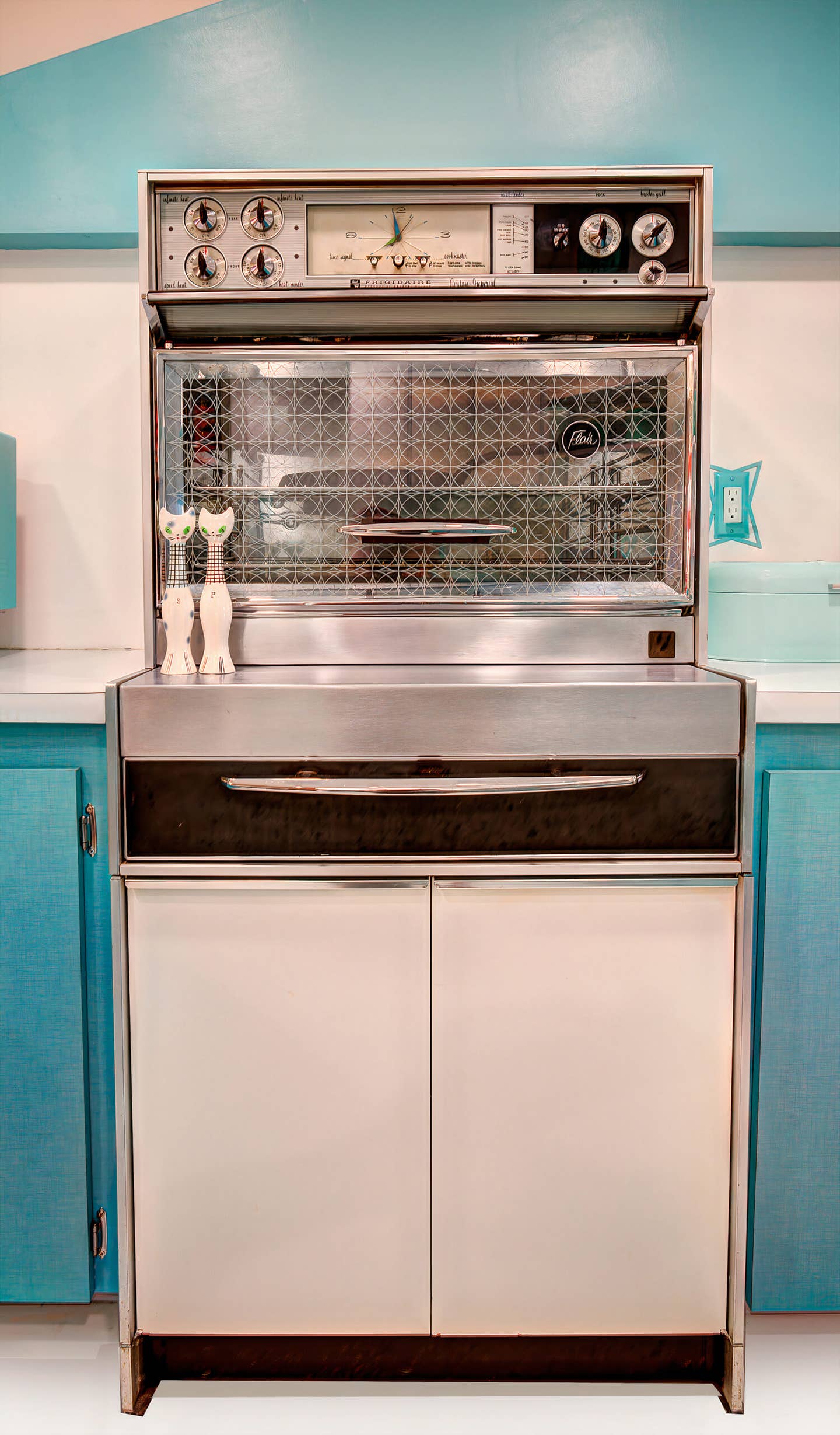The Marvelous Reappearing Act of the 1960s Frigidaire Flair Stovetop
This quirky retro appliance has a devoted cult following—but why?

When Brian and David Whittington visited their grandmother in Houston as kids in the 1970s, they’d gaze, starstruck, at the machine sitting in her kitchen: a Frigidaire Flair electric stove. With polished chrome handles and stark block typography on its dials, it looked more like a car dashboard than an appliance. Most dazzling was its stovetop: four electric burners set into a “roll-to-you” drawer that slid seamlessly out of sight. In the boys’ eyes, the Flair was a wonder. When Brian, now 49, moved into their grandmother’s house as an adult, he consulted other Flair owners to ensure the stove’s continued survival. In 2010, Brian started a Facebook group for fellow “Fans of the Frigidaire Flair.”
David, now 52, joined, and soon so did others—many others. As of February 2024, the group includes almost 17,000 members, who exchange tips on diagnosing problems, scavenging yard sales for parts, and cleaning and cooking techniques. Meanwhile, a Google group of Flair fans features more than 1,800 posts; TikToks showcasing the stove boast more than 69 million views. To present-day Flair fans, it’s the epitome of culinary Americana, a kitchen appliance worthy of public display.
The stove was designed by Jayne Van Alstyne, who joined General Motors in 1955 as a “Damsel of Design,” one of a handful of women hired to make GM’s products more “female-friendly.” She was eventually promoted to the head of Frigidaire, GM’s appliance division, and from there led Frigidaire’s design of the 1956 “Kitchen of Tomorrow,” a display kitchen with the streamlined aesthetics of the Jet Age. As commercial air travel became commonplace in the 1950s, many more appliances adopted the look and feel of aeronautic design, from glass-encased “instrument panels” to sliding oven-door suspension.
Van Alstyne’s model far outpaced competitors like the Roper Charm and the Tappan Fabulous 400 in sales and popularity. When the Flair first appeared on the television show “Bewitched,” Samantha Stephens (played by Elizabeth Montgomery) relied on the stove in addition to her powers to prepare meals; Sam’s Flair became synonymous with modern culinary magic. Design historian Sarah Archer notes that the Flair was “audience-aware, a set piece for the era in which cooking, entertaining, and dining were becoming more like theater.” Many older homes had the kitchen in the back of the house, yet starting with new construction in the 1930s, open floor plans allowed homeowners to treat their kitchens not as dirty workshops, but as showcases for their new appliances.
For many today, the stove is still worthy of display... if it can be maintained. According to David, group members tend to fall into three categories: problem-solvers, nostalgic enthusiasts, and proud home cooks. “There’s an inherently social aspect,” Brian notes of the group’s baby boomers and Gen-Xers who love sharing childhood memories of the Flair. Antique stoves may be a lot of work, but they’re also remnants of a time before cheap kitchen upgrades and planned obsolescence. “You’d be lucky to get five to 10 years out of a modern stove these days,” Brian says. “They don’t make ‘em like this anymore.”
As some homeowners worry about the health risks and environmental inefficiency of gas stoves, the chance to buy something new-or old-in the electric category may be tempting. Frigidaire (now part of the Electrolux family of appliances) has not commented on the possibility of a relaunch. But would Flair fans want to see it revived as a 21st-century appliance? Brian put it this way: “That would be fun to see-but it wouldn’t really be a Flair.”
Keep Reading
Continue to Next Story










